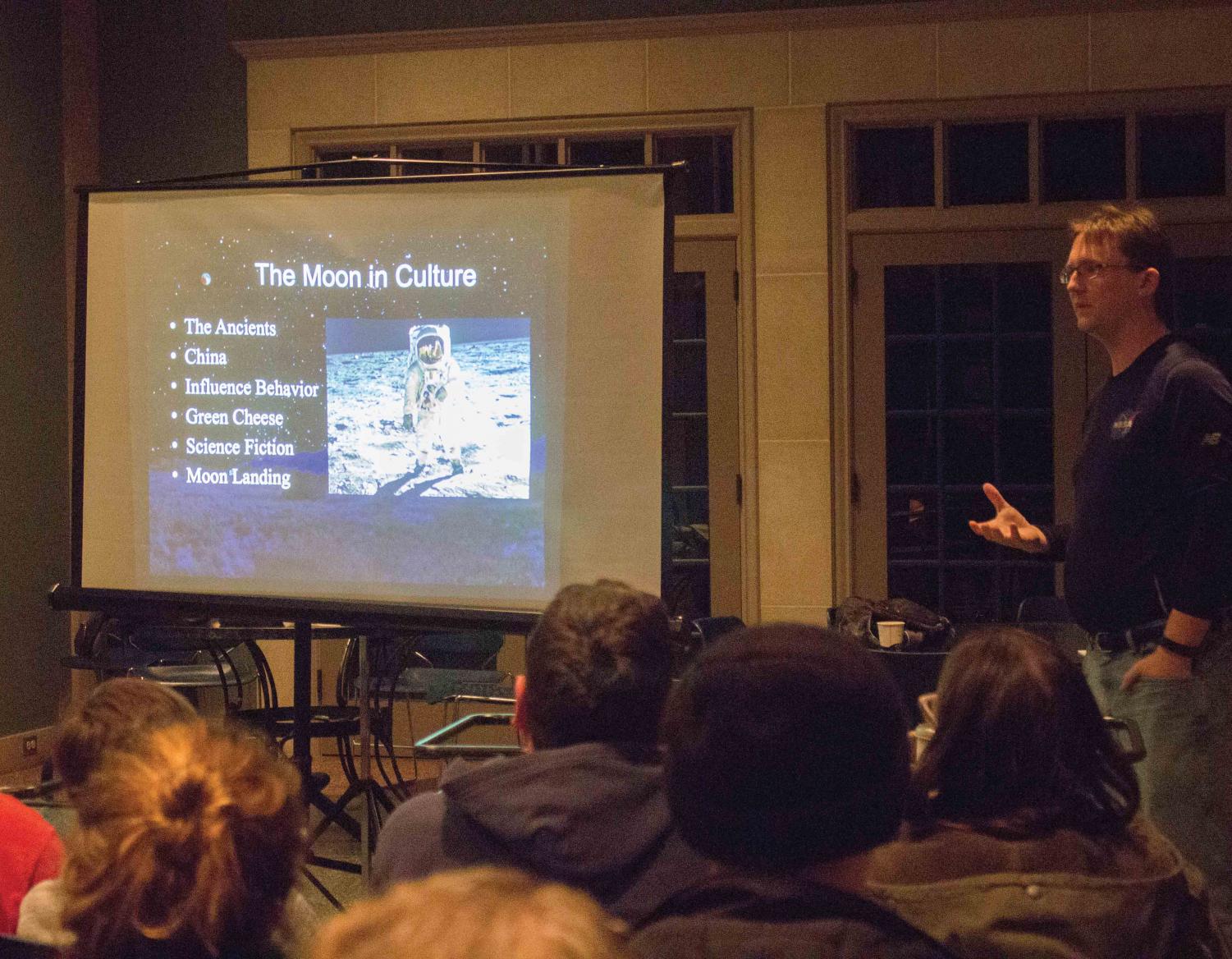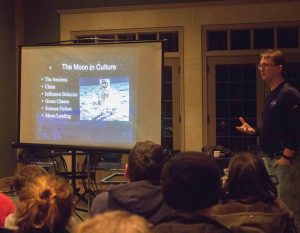Super blood wolf moon appears in sky
Jan 24, 2019
A super blood wolf moon appeared in the sky late Sunday night, Jan. 20. Despite the name, there was nothing to fear about last weekend’s lunar eclipse, according to assistant professor Joshua Sebree from the chemistry and biochemistry department.
On the evening of the eclipse, Sebree held a lecture titled “Life and the Moon” to illuminate students and community members about the upcoming eclipse and more.
“We should know about our neighbor,” Sebree said about the moon.
One of the first topics Sebree discussed was the occasion of the total eclipse and why “super blood wolf moon” isn’t the best description for it.
An eclipse at perigee is the moment when the moon is at its perfect proximity to the sun, according to Sebree. It appears “super” or closer to earth because of it, and it is only a difference of 14 percent closer when at perigee. The naming mechanism for total eclipses is not well understood, and according to the Farmers’ Almanac, the names come from Native American roots. The “wolf moon” portion is because the eclipse is happening in January. A February eclipse would simply be a “snow moon.” The “blood” comes from the sun, similar to how the sky is red at sunrise and sunset. Therefore, a “super blood wolf moon” is a lunar eclipse in January at perigee.
Amanda Juergensen, an elementary education major with a science emphasis, attended the event.
“It happens very rarely and it’s cool to go to it,” Juergensen said. “Only people on the northern hemisphere can see it.”
Students, faculty and other community members were able to attend the free lecture and lunar-viewing event, held in the Georgian Lounge of the UNI Commons. Hot cocoa and cookies were provided, as well as telescopes for viewing the eclipse.
In Sebree’s lecture, he connected the earth’s moon to the creation of life, using a miniature moon replica and dry ice as an early earth atmosphere example.
“Many people don’t realize that yes, yes we do understand that there is some influence of the moon nowadays with migration cycles or mating cycles or the lunar calendar the Chinese celebrate every year,” Sebree said. “But the history of the moon goes much, much deeper, and it’s not just a biological standpoint. It’s not just that it causes the tides that the ships sail by, it goes back to the very creation of life and may have, in fact, been responsible for life evolving as quickly as it has.”
Sebree went as far back as the origins of earth’s galaxy.
“It came from dust,” Sebree said.
In great detail, Sebree explained how the sun was first created out of stardust and that NASA’s various space missions have brought back evidence for that. He discussed CHONPS, an acronym for all the main elements needed for life (carbon, hydrogen, oxygen, nitrogen, phosphorus, sulfur) and how they were all apparent in stardust that’s been studied.
The moon’s role according to Sebree, was to bring in the tides necessary for those elements to be compressed into complex chemistry units and making life on earth viable.
This event was the last lunar eclipse of the decade.
“We’re not going to have another total eclipse across America until 2022,” Sebree said. “There’s a few partials here and there, but those aren’t nearly as much fun as the totals.”
Students at the event said they heard about it either through friends, Facebook or directly from class with Sebree.
“This was a chance to broaden my horizons,” said Mallory Park, a senior communication science and disorders major.
“There’s something to be said about the social experience of seeing it with friends,” Park said. “It’s a memory instead of just a piece of information this way.”












